









Looking After Your Finds - Rings




Anglo-Saxon - Identification


Powered By Sispro1

Jewellery
Designed by Nigel G Wilcox
Complimentary Topics
The Paragon Of Metal Detecting
& Archaeology
& Archaeology
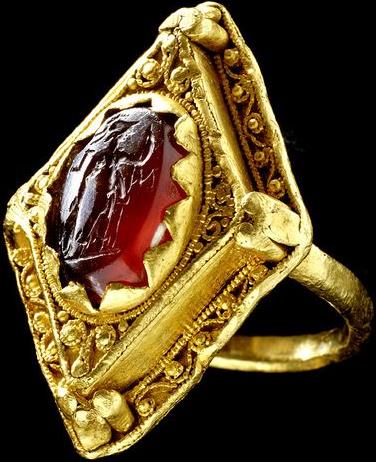
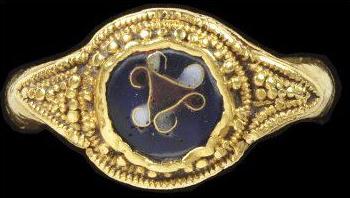
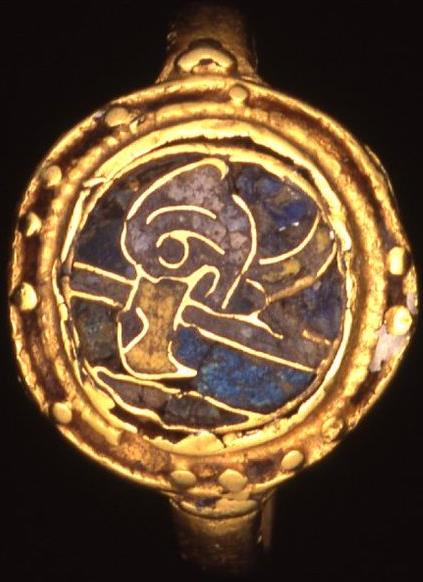
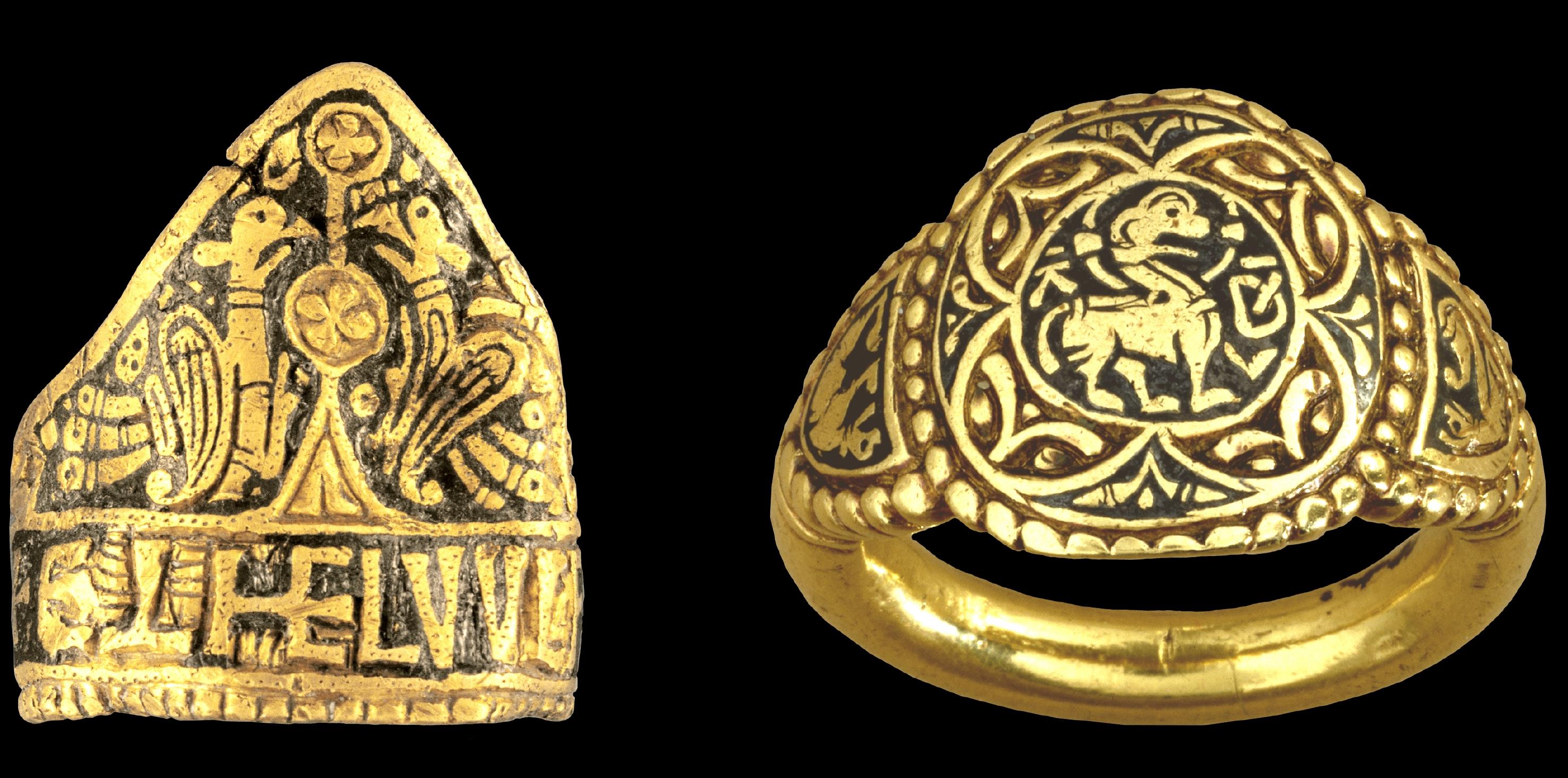
Intaglio Gemstone - This Anglo-Saxon gold ring was found in a man's back yard in England. It is a good indicator of the type of jewellery people wore in that 9th - 10 Century or 50 AD. The stone possibly representing Mars.
It s very likely that the ring belonged originally to an Anglo-Saxon Archbishop of York, one of the Earls of Northumbria or a senior member of one of Anglo-Saxon England s royal families.Although the ring probably dates from the early 10th to the mid 11th century, it could be much earlier, conceivably even from the 7th century. 90% gold, 8% silver and 2% copper.weighing 10.2 grams, is 25.5 millimetres in diameter, and is adorned with a six millimetre deep-blue sapphire and pieces of red glass, all set into the gold. Estimated Value: 35,000 .
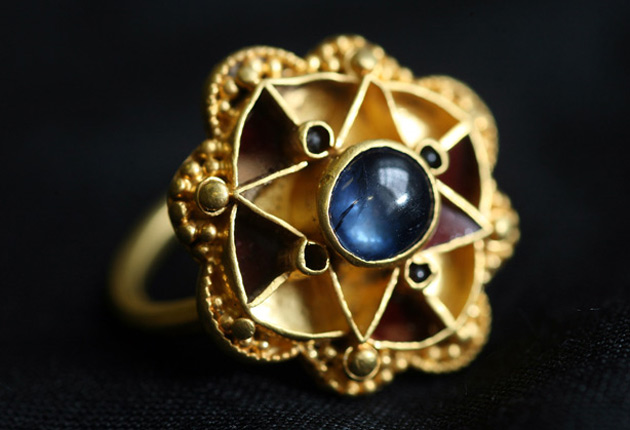
King Æthelwulf of Wessex (right), daughter Æthelswith (left), Anglo-Saxon, c. 830-890 A.D. Ring of Æthelwulf (Noble Wolf), King of Wessex, 828-858, Anglo-Saxon. richly decorated with religious symbols, and inscribed Æthelwulf Rex. Found in Laverstock in a cart rut in 1780.
9th Century CE, medium, Glod with cloisonne enamel, pelleted and toothed.
Gold finger-ring: an eagle design on the bezel in yellow, blue and purple cloisonné enamel, surrounded with pellets. Late Anglo-Saxon (late 9thc-11thc). Wincheap, Canterbury, Kent. Diam. 2 cm. British Museum.
1.
2.
3.
4.
5.
Copyright All Rights Reserved by Nigel G Wilcox E-Mail: ngwilcox100@gmail.com
Pages
Main Coin Menu
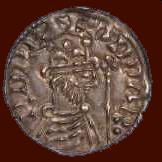
Anglo-Saxon Coins
Member NCMD
Anglo-Saxon Menu






















